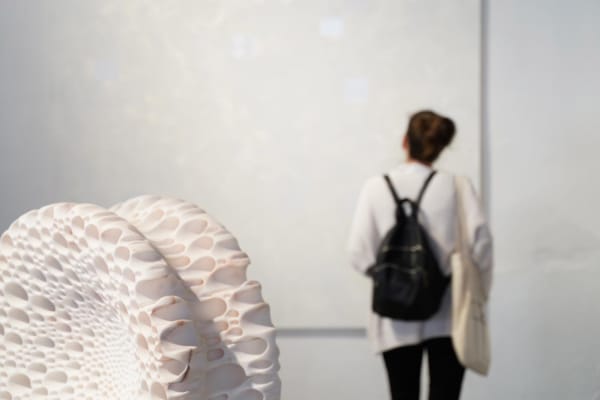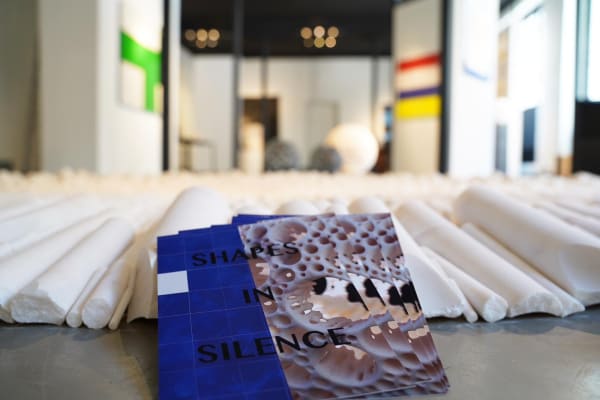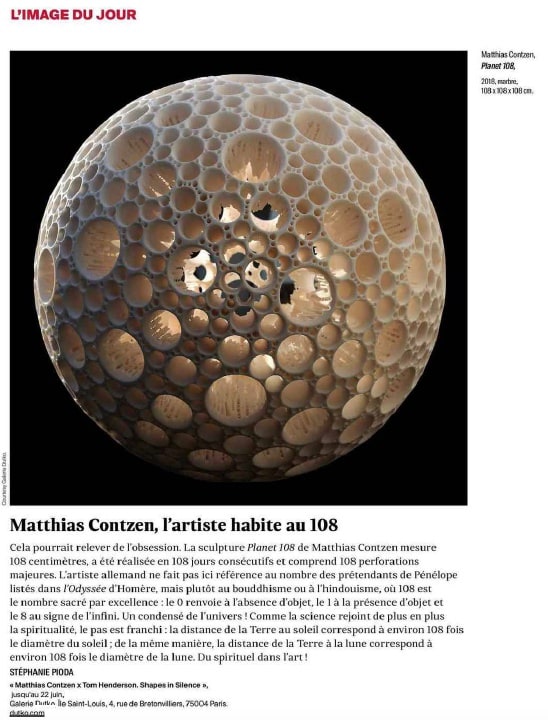SHAPES IN SILENCE
“Shapes in Silence” invites us to enter gallery Dutko and to immerse ourselves in an atmosphere of quietness and meditation. The two artists on display, German Matthias Contzen and British Tom Henderson, work in highly contrasting media and materials: if Contzen occupies physical space with large tridimensional objects, and his material of choice is the classic and candid white marble, Henderson expresses himself through objects closer to notions of the two-dimensional and employs the modern materiality of acrylic. Both artists display a preference for a single material coupled with an overarching monochromatism. Yet, the entirety of polished and candid surfaces of both marble and acrylic appear interrupted by discontinuities provoked by the crafting processes imposed onto them. Contzen grants marble a completely new aesthetic, one which recalls lace. Henderson, on the other hand, paints the acrylic glass with solid colors that are later chiseled. At first regard, the resulting geometric patterns appear still. Yet, on closer inspection, these patterns invite the viewer for deeper inspection, to look from different angles and contemplate different material transparencies.
These are two artists who regard art as an aesthetic experience, an emblem of modernity that they choose recover in order to contrast their quiet work with the convoluted and fast-paced world they live in. By negating the interference of their living circumstances, the two artists recall a tendency which has its roots in Minimalism, an art movement that surged in 1965 as a categorical refusal of the humanist mission of art.[1] Like Minimalism did, both Contzen and Henderson celebrate art’s contemplative aspect and ask us to connect with the artworks’ sacredness and its capacity to appeal to our senses. Their works transport the viewer to notions of the pure and the abstract, which are better performed through classical forms via a preconceived intellectual approach that includes mathematical systems, geometric forms and manipulation of chosen materials. The honesty of their works is delivered by their formal attributes, which directly derive from their investigatory intentions. As in Minimalism, they celebrate rationalism and a mathematical way of thinking, while sustaining “an aesthetic position in which the construction of an object would point toward an immediate, legible geometry.”[2]
As spectators, the physical connectedness with these works delivers immediate healing. Art has recently been proposed as an effective cure for illnesses including anxiety, depression and stress,[3] a recognition that comes linked to the acknowledgement of the museum’s as the ‘modern cathedral’. American art historian Carol Duncan also suggests the ‘museum as temple’ or ‘as ritual’; she advances that these are places “that could open a space in which individuals can step back from the practical concerns and social relations of everyday life and look at themselves and their world with different thoughts and feelings.”[4] Duncan’s observation is useful to remind the need for the contemplative in art. Gallery Dutko is, through Shapes in Silence, transformed into a modern cathedral, a locus of sacredness and contemplation, and where healing and meditation happen.






















